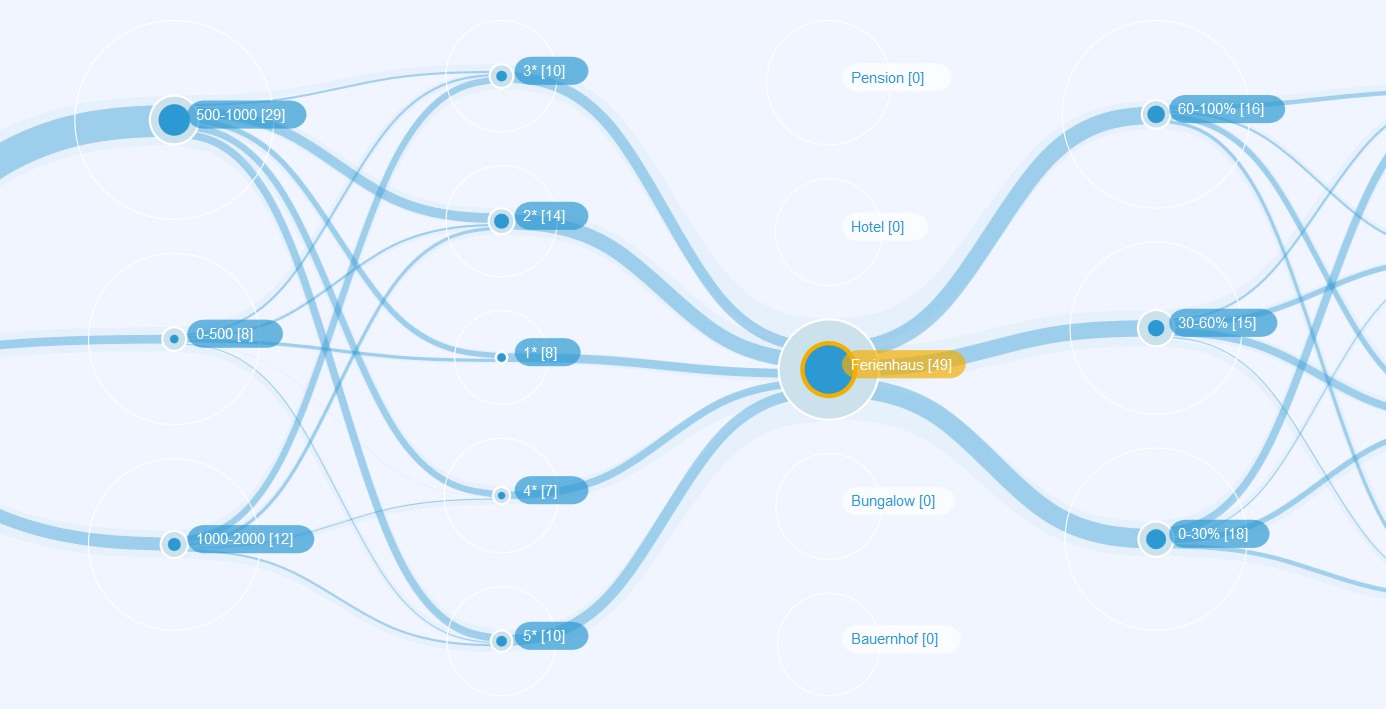The interface is designed for travel search based on the principle of parallel sets and a faceted classification. The concept combines principles of Faceted Browsing with the visualization method of parallel sets to support additional analytical tasks. Each parallel axis represents one facet of the multidimensional data set and is spatially separated in container elements representing the facet values. The radius of each container shows the distribution of data items within the facets and allows the analysis of predominant values. The containers are connected by polygonal streams representing the logical conjunction of the adjacent containers. The size of these streams indicates the frequency of items included in the conjunction. Multiple filters can be activated one or different axes to create complex filters as known from Faceted Browsing to narrow the result set on the left side. The streams support the user in the reformulation of the search query by showing him the influence of each filter. By clicking on an item in the result set, its properties are visualized by a polyline that intersects each axis at the appropriate values.
Prototype
The prototype is developed in HTML5, CSS, and JavaScript and uses the visualization library D3.js.
Related Publications
Acknowledgements
This research has been supported by the European Union and the Free State Saxony through the European Regional Development Fund (ERDF). The concept was developed in the project VISEA that has been conducted in cooperation of the Chair of Media Design -Technische Universität in Dresden, Unister GmbH from Leipzig and queo GmbH from Dresden, Germany.
